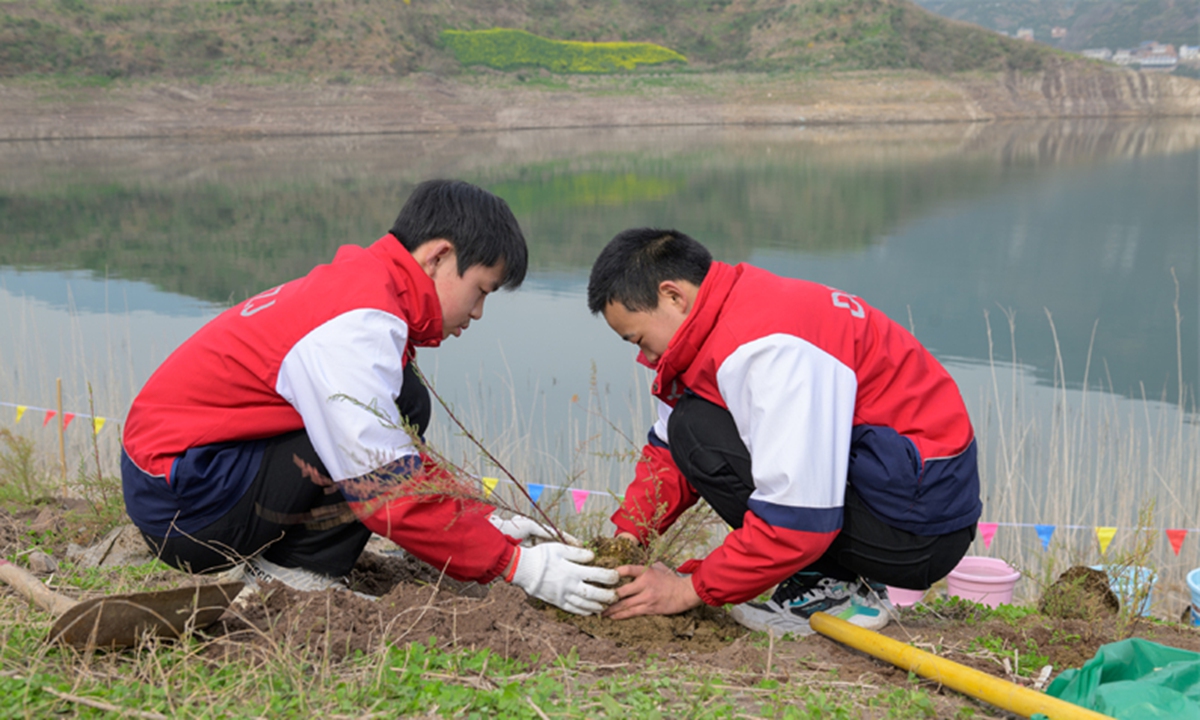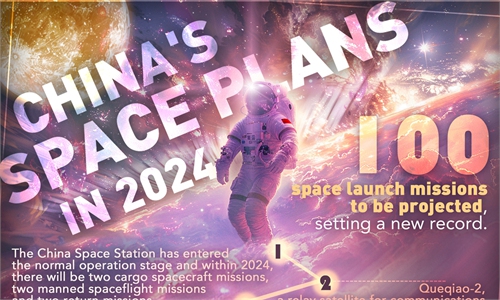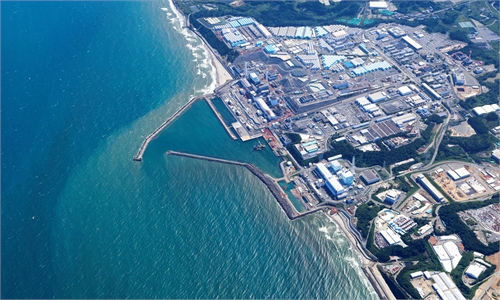
Students plant Myricaria laxiflora in Guojiaba Township of Zigui county in Yichang, Central China's Hubei Province, on March 12, 2024. Photo: Xinhua
More than 3,000 rare and endangered plants were successfully reintroduced into the wild on Tuesday in Yichang, Central China's Hubei Province. Among them, 500 Plantago fengdouensis, dubbed the "giant panda in the plant world" due to its extremely limited distribution, had traveled to space and returned, marking the first of such practice.
The plants include 1,000 Myricaria laxiflora and 2,000 Plantago fengdouensis, which are endemic to the Yangtze River and have been reintroduced into their historical distribution areas through artificial breeding efforts, Xinhua News Agency reported.
Among the 2,000 Plantago fengdouensis, 500 were descendants of space-mutation breeding plants, marking the first time that the space-breeding species has been reintroduced into the wild.
Some 4,000 Plantago fengdouensis traveled to space onboard the Shenzhou-13 manned spaceship. After 183 days of space travel, they returned to Earth in 2022 and were subjected to cultivation experiments.
"Space breeding technology has its advantages of high mutation rate and short breeding cycle, which provides a new pathway for creating germplasm resources with excellent traits," Huang Guiyun, senior engineer at the Yangtze River biodiversity research center of the China Three Gorges Corporation, told the Global Times on Wednesday.
The researchers will monitor the survival rate and growth of these space-mutation breeding species, and select those with excellent traits for better restoration of the ecological environment in the water-level fluctuation zone, Huang said.
Huang said that compared to ordinary Plantago fengdouensis, the space-bred seedlings have exhibited notable differences. "Observations show that the space-bred ones are visibly larger, with some developing clusters of leaves instead of the typical two cotyledons," the expert noted.
She said the ultimate goal is to create a new variety through space breeding, and the project is already showing encouraging signs. Ongoing genetic studies will further compare these traits with the conventional variety.
As to why her team has chosen Plantago fengdouensis to go into space, Huang explained that, for one thing, most space breeding experiments in this field focus on crops, while little has been done involving endangered plants in China, which is a new field to explore. In addition, it is a nationally protected second-level plant with an extremely narrow distribution, and space breeding could explore the potential for creating a new variety to further contribute to the species' conservation.
Planting the two species, which feature strong resistance to water flow and waterlogging, not only plays a role in soil reinforcement and riverbank protection in the water-level fluctuation zone of the Three Gorges Reservoir area, but also helps with restoring biodiversity in the Yangtze River Basin, said researchers.
Huang explained that the return of rare plants to the wild is a systematic project, which involves the research on wild acclimatization to explore the flowering and fruiting conditions of the returning plants. Meanwhile, research on the original habitat and biodiversity will be carried out to protect the integrity of the ecosystem, ensuring that the plants can naturally reproduce and thrive after their return.
The Yangtze River biodiversity research center has successfully rescued and protected 30,000 specimens of 1,950 rare and endemic plant species in the Three Gorges Reservoir area, such as the sparse-flowered water fir and the lotus-leaved iron fern. Additionally, the center has conducted breeding research, overcoming challenges in propagating nearly a hundred rare plant species and producing over 260,000 seedlings of these unique and rare plants.
Starting from the Shenzhou-16 mission launched in May 2023, which was the first since Chinese space station enters application phase, the China Manned Space Agency has openly solicited space breeding experiments for public participation. The agency also established a space breeding experiment management platform to accept applications for experimental projects.
After careful review and selection, 136 types of space breeding materials were carried to space with the Shenzhou-16 manned spaceship. This includes 47 types of crops, 76 types of forestry, grass, and medicinal plants, as well as 13 types of microorganisms and others.
The seeds that are exposed to space often deliver higher yields, better quality, and stronger resistance, experts said.
To date, the Chinese manned space engineering project has created over 40,000 space-induced germplasm materials through various flight missions, developing over 460 new varieties of crops such as rice, wheat, corn, soybeans, cotton, oilseeds, and vegetables. This has significantly increased crop yields and quality, generating economic benefits of over 360 billion yuan ($50 billion).
For example, a "space pepper" can yield as high as 4,000 kilograms per mu (0.067 hectares) and has a vitamin content twice as high as regular peppers; the "space pumpkins" average over 200 kilograms each, and the "space tomato" seed is capable of producing over 10,000 tomatoes per tree.



